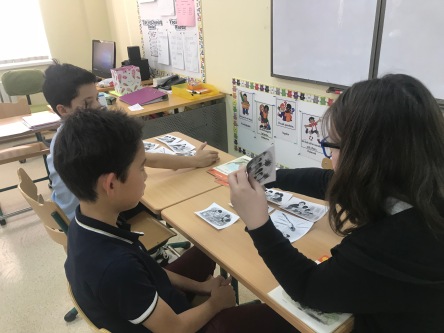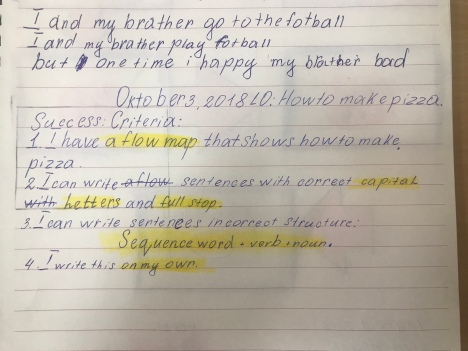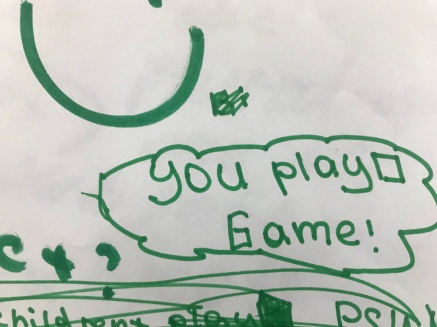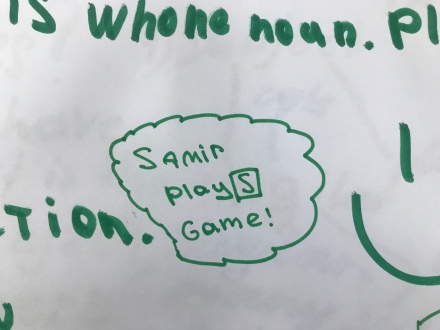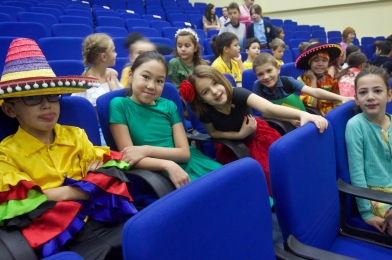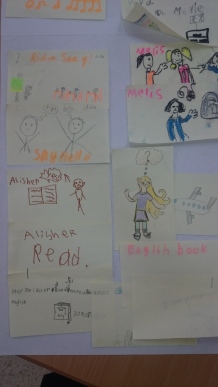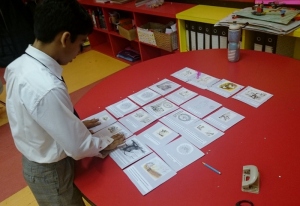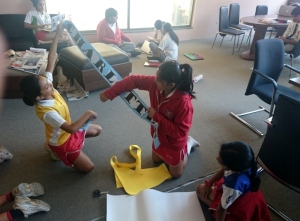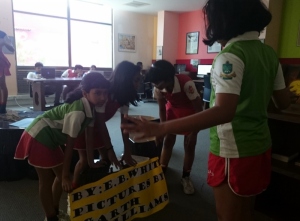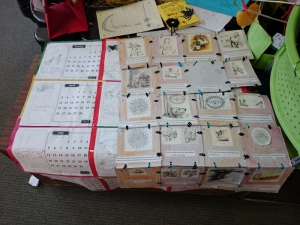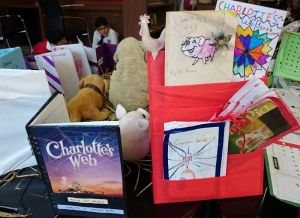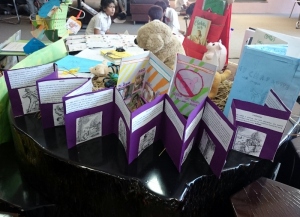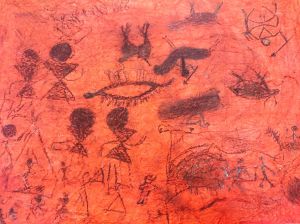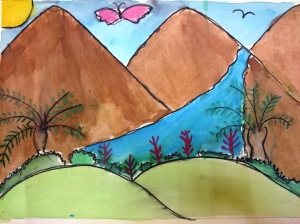
I recently read the article of John Kenny about differentiation and the article of Christina Milos about educational myths. I’d like to say that I admire these educators as they put forth their questions and critical analyses (which I believe are valid) out there. I share the same view with them: ask and explore with an open-mind until it totally makes sense. This is what a real discourse is, and this is how we evolve. In this article, I will share my thoughts on differentiation.
Background: I’m Asian and Asia is very communal. We grow up knowing that we are indeed part of a community, starting with our big families. Having to be a part of a communal society also implies that we live up to the standards of our community- whatever that means, whatever it takes. The society does not adjust to us, we adjust to it and I never saw this as something necessarily bad, only different from the Western social beliefs and structures.
During my early teaching years, I had many trainings that were very ‘western’ in nature, including personalized learning and differentiation. They are amazing and learning about them opened me to a whole new universe. But you could imagine how challenging it was to absorb these for us, granted that our context is quite different. I had many questions, but at that time I knew I just had to learn more to reach clarity. So like any passionate teacher, I strove to learn more about them, I implemented them in the classroom, adapted them in our context, and observed results and impact.
The differentation idea: The idea behind differentiation is noble and sound. Everyone is unique, we could all learn differently, we could all learn best in different ways, we could show our understanding in different ways. It’s nothing new, though. Back in school, I knew I had to strategize and do things that work for me to get through Maths. I drew all my solutions, but just the same, I had to calculate to get to the answers. I just had to draw first. I drew my ideas before I wrote my papers, but just the same, I needed insightful content and proper grammar. I just had to draw first. It’s nothing new, only that in Asia, or specifically in my school, the conviction to ‘differentiate’ came within me, and not from my teachers. We the students needed to adjust to the same teachers, lessons, tasks and exams…but we all, more or less, did something different to enjoy and survive school.
I knew that we are all smart and special. But I also knew that some are smarter than me and that I could be smarter than some- I didn’t have any problems with this (I’m not sure about my parents). But I think many people do because they want the same results and progress from children who have different abilities.
Like as if when a student fails to get good marks in Maths, I didn’t differentiate enough in class and that’s why my student failed. And this is one notion or implication of differentiation that bothered me: that we differentiate so we could help our students achieve the same results as others. This notion put pressure on my back and kept me low for some years. But back then, I didn’t feel the need to question. I just felt that I just needed to learn more and improve my ‘views’ and practice, because there’s always that space for self-awareness and growth.
The learners: In my years of teaching, I’ve seen how differentiation improves motivation for learning, how it makes learning fun, and how it develops my students’ healthy self-esteem. Students realize more about their strengths and areas for improvement. However, I’ve also seen students compromise their strengths in order to get ‘easier tasks’ and to spend more time with me (because the students see that I spend more instruction time with the ‘less able’ kids). Similarly, I’ve seen how some of the ‘less able’ kids take advantage of their own challenges, to get ‘easier’ content, process and products. But these things- students comparing work and effort and classroom competition- are easy to handle if you have a good relationship with your students, and if you do constant pep talk.
But the thing that really bothered me the most about differentiation is that, as much as we are able to enhance our students’ strengths through it, it seems that we have also become more forgiving and lenient of our students’ weaknesses- and this seems to be an accepted practice in education. Kenny verbalised some of my ideas in his article, paragraphs 4 and 5.
The teachers: I’ve seen how differentiation makes teachers feel more fulfilled as they could see better progress from their students. I’ve seen how it forces teachers to develop their skills and over all mindset about teaching (in a positive way) and about the nature of learning. But yes, I’ve also seen how difficult and taxing it could be. We could differentiate through many ways, like through content, process and product, but that only means that we need to differentiate engagements, mini-lessons, learning outcomes, assessment tools and strategies, and over all standards. This is fine, of course, but it is a lot of work. I’ve seen teachers burnt-out of differentiating, and teachers pressured to do whatever magic it takes so students with ‘low abilities’ can produce ‘good’ results like the others. I’ve seen teachers get confuse because the practices of grade level expectations and standardized tests don’t seem to match the noble ideas of differentiation. I’ve experienced all these challenges, too. And there on-going doubts; only now I know I have the capacity to critique and ask questions, because I am self-aware and this is how I grow.
My thoughts today: Maybe if my teachers back in school knew how to differentiate, I could be a smarter person today. But I guess I turned out just fine. In fact, I knew from a young age that the world doesn’t revolve around me, and I had to actually do something and work hard to achieve good results- whatever my teachers threw at me. And if I don’t get good results, I just have to try harder, or else I will be grounded forever. Even if we are now in the 21st century where we continue to experience massive shifts and changes in education, somehow my schooling in the past continues to remind me of the essentials.
My point is, if we do not understand the wisdom and process behind differentiation, we miss teaching grit and resilience in our class, which research suggests are the very important traits we need today in order to succeed (Duckworth 2013). And if we fail to hone these traits, we also seem to fail to hit the point of differentiating, which is to help students achieve personal success.
We shouldn’t just differentiate because of what students can and can’t do. We differentiate so student can learn how to help themselves to overcome their weaknesses and fears. We differentiate to teach them that setting and achieving personal goals matter a lot– sometimes more than the grade level and societal standards. Giving realistic standards to students should not equate to lowering standards. And differentiating doesn’t mean that students can’t or shouldn’t learn and do what the others are learning and doing.
If the ‘one-size fits all’ instruction does not work, then one way of differentiating would also not work. There is so much exploring to do when we talk about differentiation, and we should continue to ask questions, to examine this, to suggest best pratices considering different contexts, and to analyze why it works and why it doesn’t. Clearly I have to learn more about this, but one thing I know for sure- teacher trainings about differentiation shouldn’t box it into ability groupings.
My take on differentiation now (I’m sure this could further evolve later) is that it is not just a type of strategy or education that comes from the teacher, but an effort coming from the students and the entire learning community. Let’s teach the students how to differentiate for themselves so they can learn how to adapt; instead of just the teachers adapting to the students’ needs.
Let’s collaborate realistic goals with our students and make concrete plans on how to reach them.
Let’s not just give some of our students the ‘easy tasks’, but let’s give all of them many opportunities to develop strategies. So they can choose the best tool to help them tackle difficult situations. Explicitly teach study skills.
Let’s teach using concepts and use them wisely in class, so students can freely utilize their knowledge, different skills and talents when developing an understanding.
Let’s know our students well so we can make smarter and more targeted lesson plans and assessments- by anticipating different needs, giving provisions for diversity, giving spot on resources to those who struggle and to those who don’t.
Together with our students, let’s collaborate on concrete choices with clear expectations (rather than ‘do whatever you’re strong at’ tasks and assessment), so we can make sure that the students are showing the targetted outcomes and understanding clearly.
Then feedback, feedback, feedback. Let’s give them individual feedback and how their effort help achieve their goals.
And finally, let’s keep on discussing about how we can show grit, hard work, perseverance, fairness and success in and outside the classroom, so that our students (and parents) understand differentiation does not necessarily mean arriving at the same results.
Reference:
Grit: The power of passion and perseverance by Angela Lee Duckworth: https://www.ted.com/talks/angela_lee_duckworth_grit_the_power_of_passion_and_perseverance
Still Not Convinced About Differentiation by John Kenny: https://johnkennyweb.wordpress.com/2017/07/17/still-not-convinced-about-differentiation/
Myths in Education, or How Bad Teaching is Enourcaged by Cristina Milos: https://momentssnippetsspirals.wordpress.com/2016/02/22/myths-in-education-or-how-bad-teaching-is-encouraged/
Myth-Busing Differentiated Instruction: 3 Myths and 3 Truths by John McCarthy: https://www.edutopia.org/blog/differentiated-instruction-myths-and-truths-john-mccarthy
What Differentiated Instruction Is-And Is Not by TeachThough Staff: http://www.teachthought.com/pedagogy/the-definition-of-differentiated-instruction/
 Students learned how to use the dictionary, and demonstrated the IB attitude cooperation
Students learned how to use the dictionary, and demonstrated the IB attitude cooperation
 September 5 work shows that students are still learning how to structure their thoughts
September 5 work shows that students are still learning how to structure their thoughts Example: explicit teaching of vocabulary, parts of speech and language structure, and repeated practice in both familiar and unfamiliar contexts
Example: explicit teaching of vocabulary, parts of speech and language structure, and repeated practice in both familiar and unfamiliar contexts September 19 work shows students apply the structure learned independently in a familiar context.
September 19 work shows students apply the structure learned independently in a familiar context.

